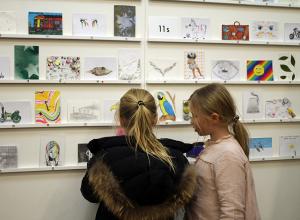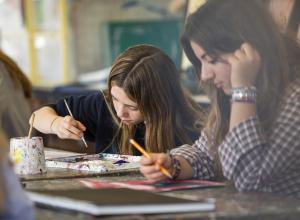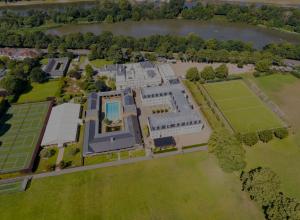
Harrodian Art History students tell us about the paintings that inspired them at the National Gallery's After Impressionism exhibition.
Lower Sixth History of Art students recently visited the National Gallery to see the ‘After Impressionism’ exhibition. The show covers the transition between Impressionism and Modern art that occurred during the French Belle Epoque, between 1870-1914. Lower Sixth students have just finished studying a 19th century module, and will begin studying 20th century modernism in Europe soon.
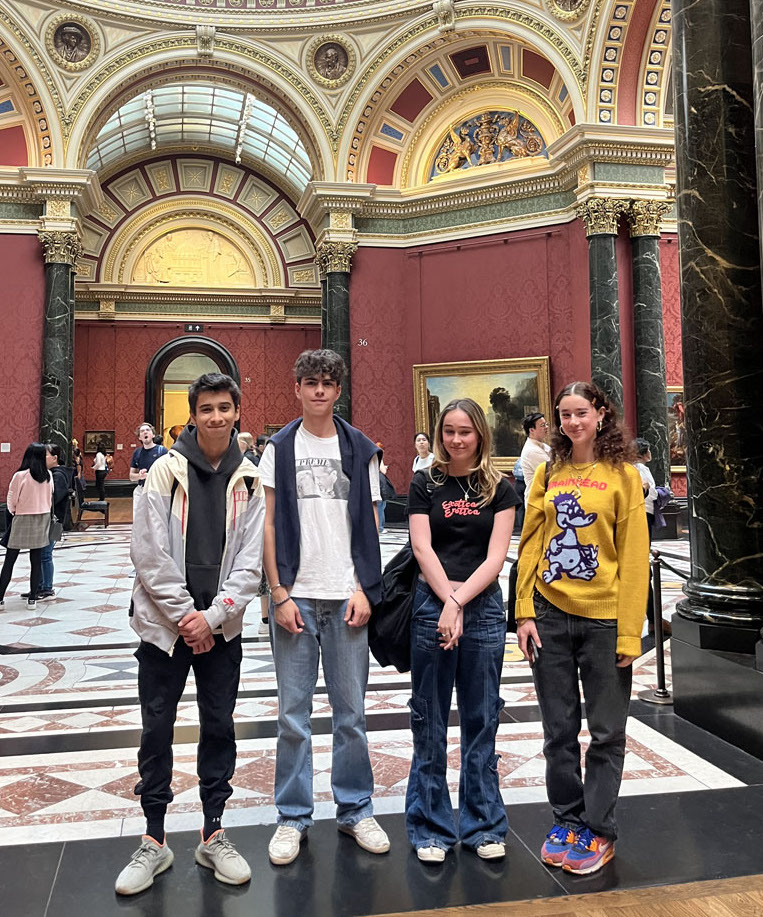
Impressionism began in the 1860s with artists who wanted to capture light effects that they observed while painting en plein air, leading to atmospheric and colourful canvases. After Impressionism, artists began to incorporate emotion and expression into their paintings, moving towards a more modern sensibility. When visiting the exhibition, students kept an eye out for paintings that helped them understand the new ideas brewing in the minds of modern artists. Here are some of their thoughts.
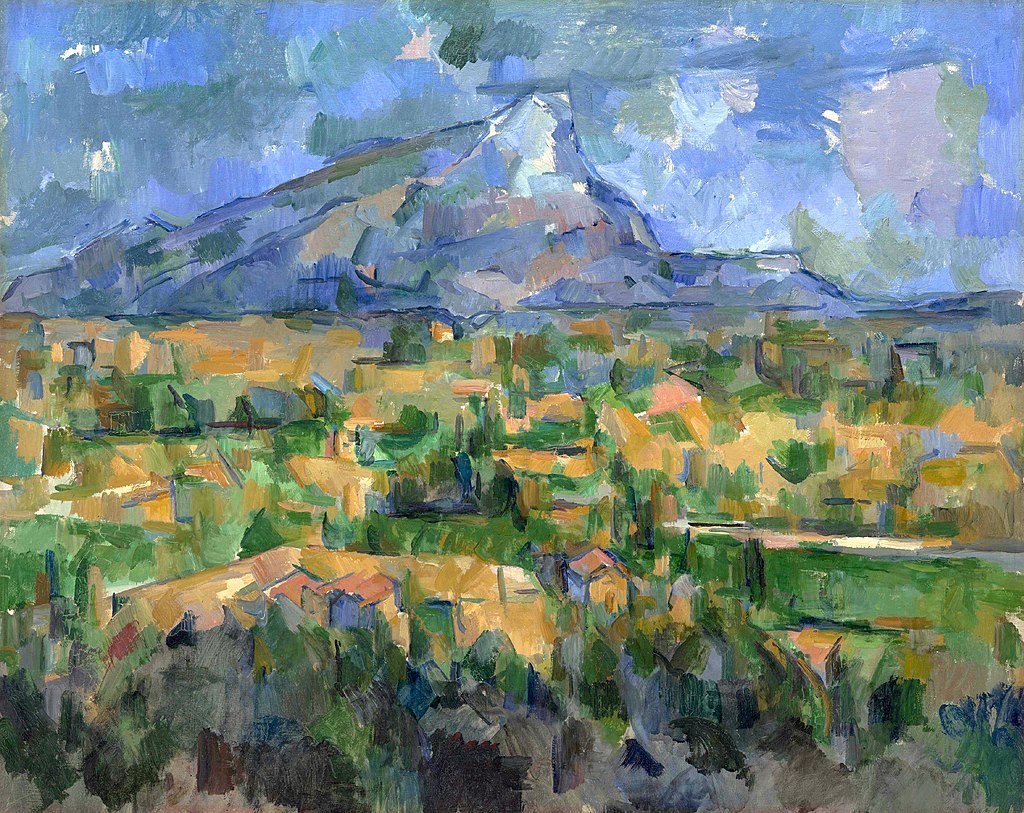
Cézanne’s 'Mont Sainte-Victoire', (above), stood out for L6 student Eliza as a painting that marked an important shift from Impressionism. She writes: 'This landscape painting made in 1886 showed off his modern style of painting. The painting was from the viewpoint of his house in Provence looking out onto a prominent mountain with uneven architectural forms that Cézanne was inspired by. This painting was his most symbolic landscape subject, as well as being his favourite. Cézanne attempts to make nature a more simple subject by using simple shapes to depict it. He brings an order and sense of clarity to the landscape using simple cylinder and triangle shapes.
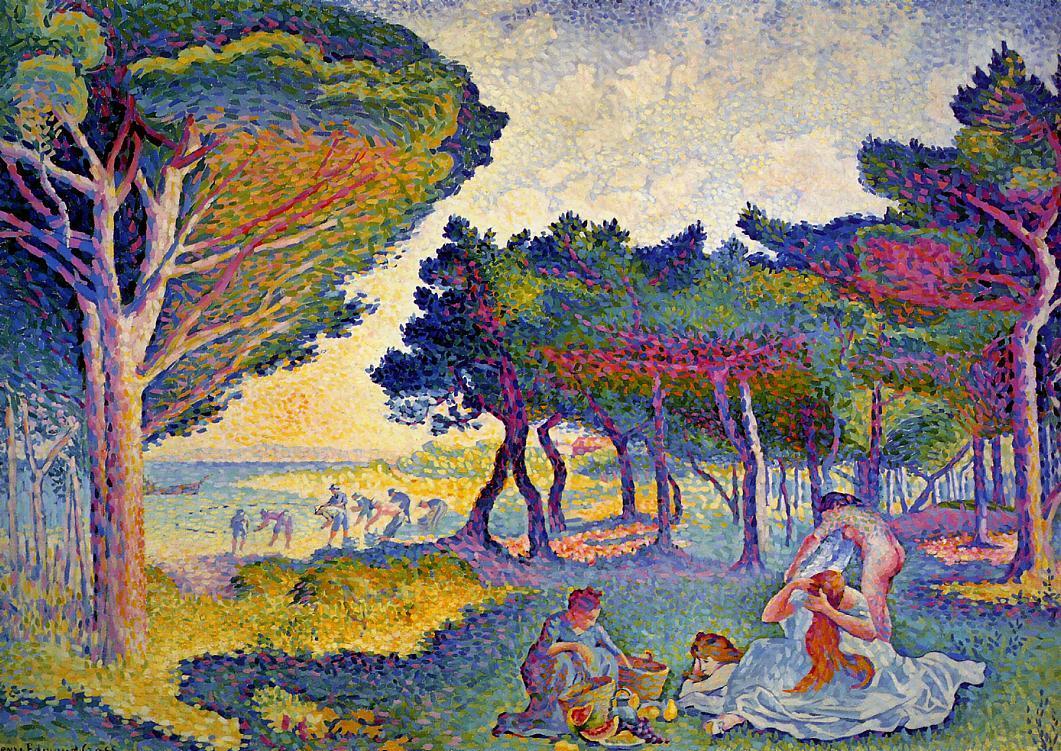
Lana was captivated by Henri Edmond Cross’s 'By the Mediterranean', a Neo-Impressionist painting that was inspired by the pointillist method of painting. She writes: 'I found the small brush strokes of dotted paints to be extremely interesting as an innovative technique that reinvents landscape painting. The polychromatic painting features a vertical emphasis due to the extended nature of the trees and their brown and yellow with a hint of purples and blue in the bark. This painting was created at the end of the 19th century and you can see that the painting has moved from the extremely loose landscape paintings such as Monet’s Impression: Sunrise to a mix of abstraction and clarity. The forms are clear but the image is still using perceived colour and a pointillism technique, showing innovation.'
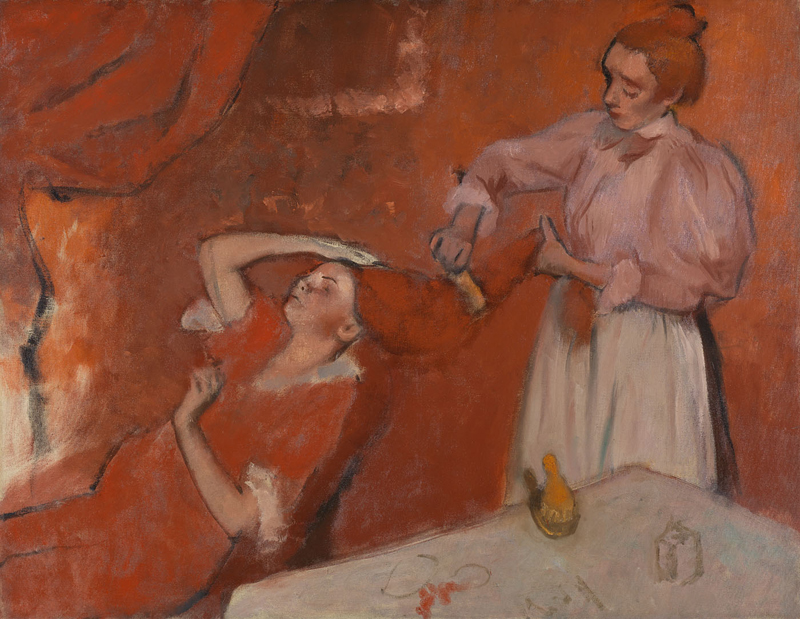
The vibrant, monochromatic colour scheme of Dégas’ Combing Hair, (above), caught the attention of Ilaria. She writes: 'Dégas made this striking painting in 1895, which falls into the “Belle Epoque” of his home country, France, and nears the end of his movement's time before it is swiftly taken over by the newly founded Post-Impressionists. The painting has a sense of harmony due to its warm colour palette and the lack of distinguishable facial features in the two women, unifying the two subjects through their faces as well as their echoed hair. This was not the first time that Dégas had presented this subject matter; Dégas in fact created several similar paintings of women combing their hair throughout the 1890s, each sharing a red tint to their hair. The colour “auburn” was donned very fashionable in this period and is perhaps why Dégas had such a fixation on this rare tone and presented it so extensively.'

Paul Gauguin’s The Wave, (above), was the work that stood out for student Olly, who writes: 'This painting immediately stood out to me through the sharp contrast in colour and differentiation in technique used with the bright red beach and the white and blue water. Gauguin takes a more highly blended approach in order to depict the red beach sand, whereas for the water we see Gauguin use more visible brush strokes in order to illustrate the currents in the water. Through its similarities to Japanese prints, through the swirls in the water and perhaps the general flatness heightened by the bright red plane, it is evident where Gauguin gets his inspiration from. With regards to the timeline, being painted in 1888, it falls to the end of the spectrum along with the Eiffel tower, (which was created a year later in 1889) marking the start of a new artistic freedom in France.

Each of these works were made at the end of the 19th century and carried the seeds of modern painting techniques, such as flatness, primitivism and non-naturalistic colour. Once into the 20th century, artists started to run with these ideas, creating new movements along the way. One of the key movements of Modernism was Fauvism, led by Matisse and Derain. Their expressive canvases earned them their name in 1905, which translates to ‘wild beasts’. Rose was taken with André Derain’s The Dance, (above), writing: 'The Dance belongs to a well-established tradition of imagined primitivist scenes in European art. He was initially greatly influenced by Paul Cézanne and his geometric forms, and was later fascinated by the work of van Gogh. Andres Derain wanted to give a much greater appreciation to the expressionistic qualities of paint in his paintings, hence the explosion of colour and his use of un-naturalistic forms. This painting stood out due to its unusual subject matter, being multiple women dancing in a jungle, and many vibrant colours. It is like a union between humans and nature. The dance echoes the paintings of Paul Gauguin with its style of oversimplified objects and vibrant colours.'
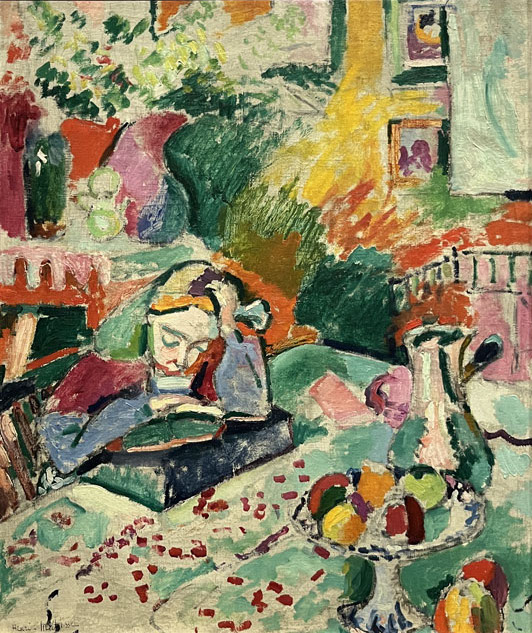
Zac makes a final observation about Matisse’s 'Interior with a Young Girl' (above): 'The large dabs of paint used to create the table cloth are the last trace of a modified Neo-impressionist style that Matise adopted, whilst working with Signac. Matisse's skilful use of colour creates harmony within the atmosphere of the domestic home, as he uses warm hues of oranges and yellow, that contrast with the cooler toned blues and greens. Possibly, we see influence of Pre-Raphaelite artists such as William Homan Hunt, as we can see his use of colour theory in order for the colours to appear more vibrant; in the girls hair he puts yellow and purple side by side, on the table cloth he uses magenta against a bluey-green. Matisse's personal style involved flattening forms, use and experimenting with arbitrary colours, and rejecting the strict representation of reality and the traditional art, therefore was the starting point for abstract art. He showed viewers and other artists that it was ‘okay’ to capture the essence and emotional impact of a subject, and rather than portray a narrative, one should express emotions within their artwork. We can now see this influence in contemporary art.

